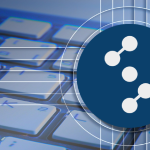Launched in 2021 Stohn Coin is a growing cryptocurrency that is decentralized, minable, and currently an undervalued digital currency. But what does it mean for a currency to be “decentralized”? And why do people claim that nobody controls Stohn Coin? Let’s delve into this.
What Does Decentralization Mean?
In traditional financial systems, a central authority (like a bank or government) validates and regulates transactions. In contrast, a decentralized system operates without such a central authority. Instead, its operations are spread across a network, with each participant (or node) having a copy of the entire transaction history.
Stohn Coin’s Decentralization Explained:
Distributed Ledger Technology (Blockchain): Stohn Coin uses a type of distributed ledger called a blockchain. Every transaction is grouped into a block, and these blocks are chained together in a sequential manner. Once a block is added to the chain, its data becomes practically immutable, making it resistant to fraud or tampering.
Proof-of-Work Consensus Mechanism: Stohn Coin uses a consensus mechanism called proof-of-work. This means that in order for a transaction to be added to the blockchain, network participants (called miners) must solve complex mathematical puzzles. The first one to solve it gets the right to add a block to the chain and is rewarded with Stohn Coins. This system ensures that the majority rule — no single entity can control what’s added to the blockchain unless they control over 50% of the entire network’s computational power, a feat almost impossible to achieve given the current vastness and spread of the Stohn Coin network.
Node Distribution: Anyone can run a full Stohn Coin node, which contains a copy of the entire blockchain. This wide distribution of nodes ensures the resilience and redundancy of the network. If one node fails or is shut down, the network continues to operate normally.
Open-source Nature: Stohn Coin’s software is open-source, meaning its code is freely accessible and can be reviewed by anyone. This ensures transparency and allows for community-driven development and improvements.
Fixed Supply Cap: Stohn Coin also has a predetermined supply cap of 40 million coins, ensuring that no central authority can arbitrarily print more money, a common concern with traditional fiat currencies.
Challenges to Central Control:
Global Distribution: Stohn Coin’s network spans the globe, making it resistant to control by any single government or entity.
Pseudonymity: While all Stohn Coin transactions are transparent and can be viewed by anyone, they aren’t directly linked to personal identities, granting a level of privacy to users.
Censorship Resistance: Transactions on the Stohn Coin network cannot be easily censored or stopped, ensuring financial freedom, especially in places where traditional systems are restrictive or under surveillance.
Conclusion:
Stohn Coin is the embodiment of decentralized financial technology. Its design, which combines cryptographic security with a proof-of-work consensus mechanism and a distributed ledger system, ensures that no single entity has control over the entire network. While it’s not entirely immune to potential threats or changes — especially if a large portion of the network agreed to certain modifications — its foundational principles make it resistant to central control, censorship, and interference.
Explore the Stohn Coin blockchain – https://stohnexplorer.com/
View Stohn Coin mining pools – https://miningpoolstats.stream/stohncoin









